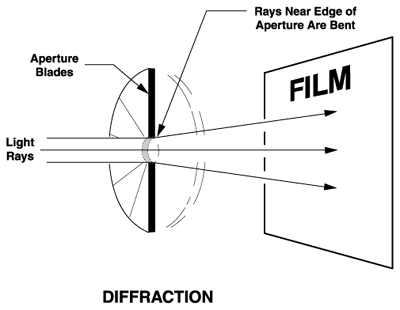
Meeting 9
One print due at the beginning of class. Critique of work.
Filters for b/w film
See the handout for using
colored filters on black and white film. Colored filters are
used to shift the tones in black and white photos to emphasize or to separate
two colors that would normally reproduce with similar shades of gray. The most
common use of filters in black and white photography is for darkening blue skies
with yellow, orange, or red filters. The warm-colored filters block the
blue-cyan light. Less exposure from these areas of the scene darken that part of
the picture.
The filter manufacturer Tiffen has some examples on their web site http://www.tiffen.com/black_&_white.htm
Polarizing filters are also used to block naturally polarized light that reflects from non-metalic surfaces such as ocean water or store windows. Reduced reflections mean that you can see through store window better, or that the ocean gets a deeper blue-green color when photographed in color. Even reflections from airborne aerosols can be reduced making the sky a little darker in b/w or deeper blue in color photography.
Differences between non-coated, coated, and multi-coated filters are obvious when viewed side by side. Coated or multi-coated filters should be employed for maximizing shadow contrast.
How diffraction affects sharpness
Diffraction is bending of a light ray as it grazes a solid object
like the blades of an aperture. Light bends slightly around the object and hits
the film at a point somewhere other than it should. The blurring of sharp detail
becomes worse as you stop a lens down because of the ratio of clear area to the
circumference on the aperture blades.

In short, the wider the aperture, the higher theoretical sharpness can be achieved. However real-world lens imperfections become more pronounced as a lens is opened. That's why a lens is usually sharpest when stopped down a couple stops, but performs less well on either side of the "sweet spot". Stopping down a little does not bring into play substantial diffraction, but does minimize lens imperfections.
Diffraction is a phenomenon from physics. No lens design can eliminate it.
Printing on fiber paper
See the handout for printing on fiber paper. Fiber based paper (as opposed to
resin coated "RC" paper) is the museum quality paper standard
that has endured a century of use. It's more time-consuming to work with and
more costly but many serious printers believe it is worth it. Its archival
properties have been demonstrated to exceed the life of an RC print (see
Henry Wilhelm and Carol Brower; The Permanence and Care of Color Photographs:
Traditional and Digital Color Prints, Color Negatives, Slides, and Motion
Pictures, Preservation Publishing Company; 1st edition (June 1993).
Here is an excerpt from page 593:
Black and White RC Papers Should Be Avoided by Museums, Archives, and Fine Art Photographers
In the fine art field, and for prints intended for museums or archive collections, this author strongly recommends that all black-and -white RC papers - including those made by Eastman Kodak - be strictly avoided. Instead, double-weight fiber-base papers, treated with a protective toner, should be selected. This is particularly important in the fine art field or in other applications where prolonged display of prints is even a remote possibility.
To obtain the print life that makes it desirable to collectors, you must process it carefully and especially wash it properly. Poor processing, weak fixer, or a poor wash will negate any archival properties it may have. Fiber paper has little latitude for sloppy methods.